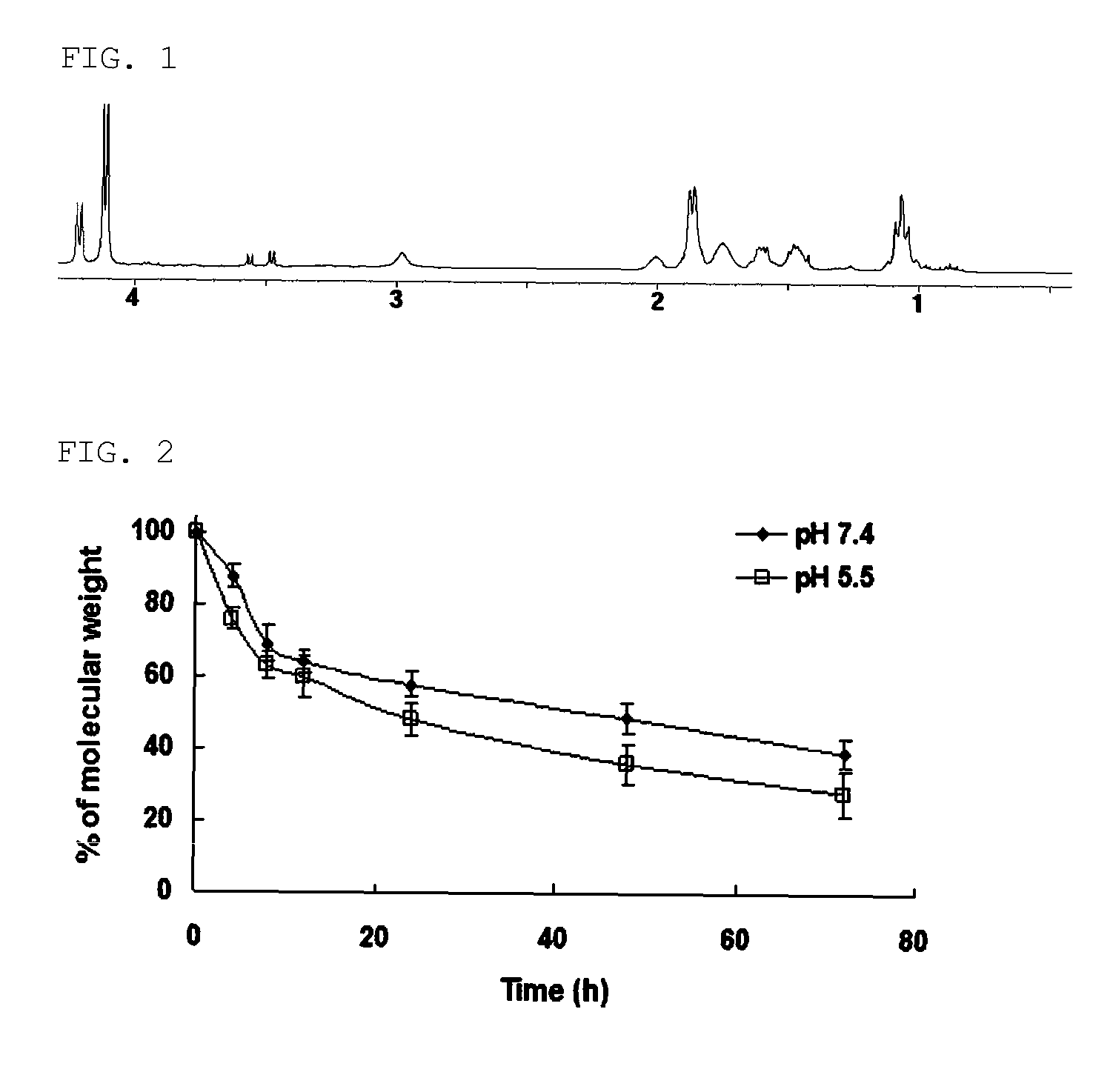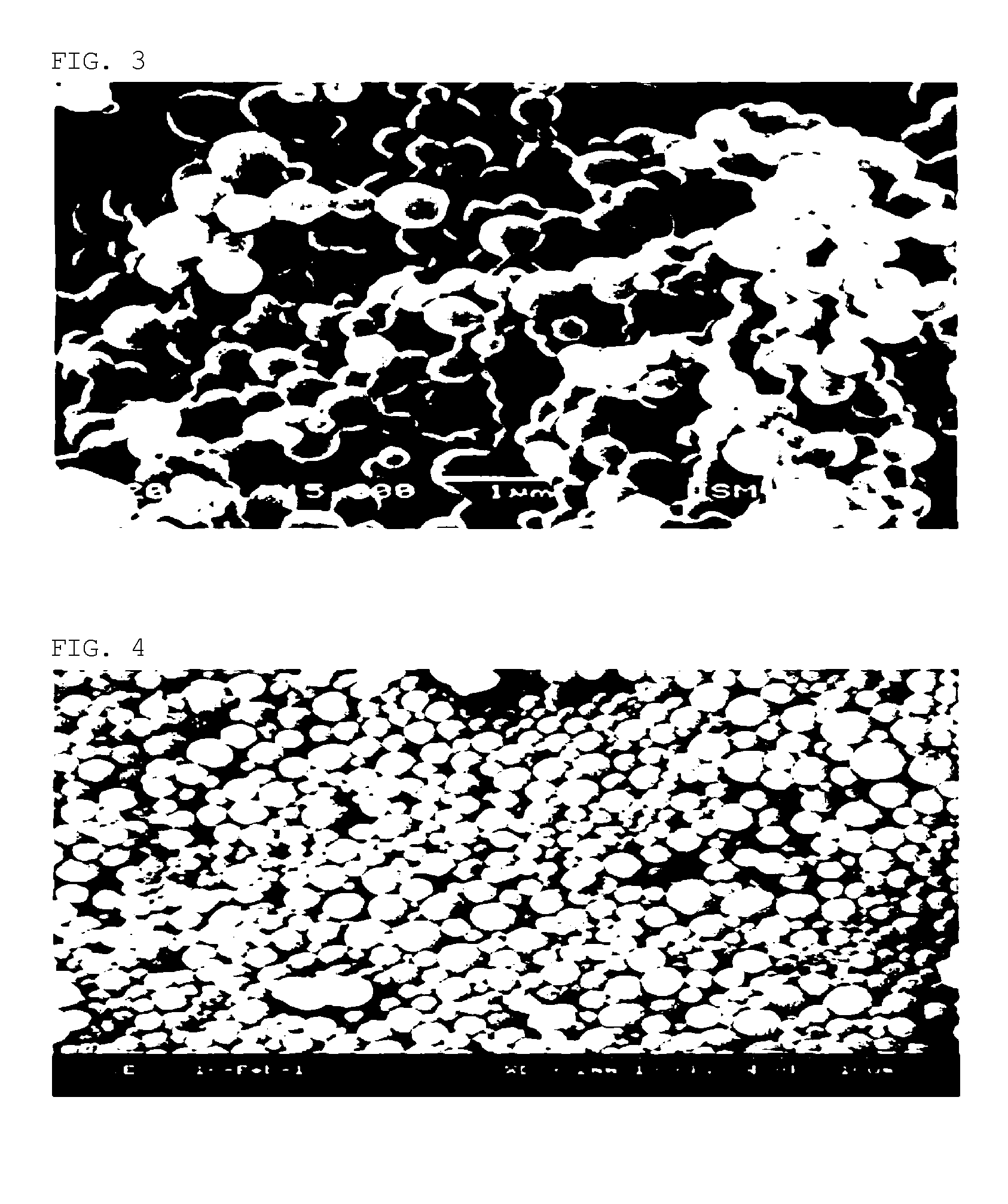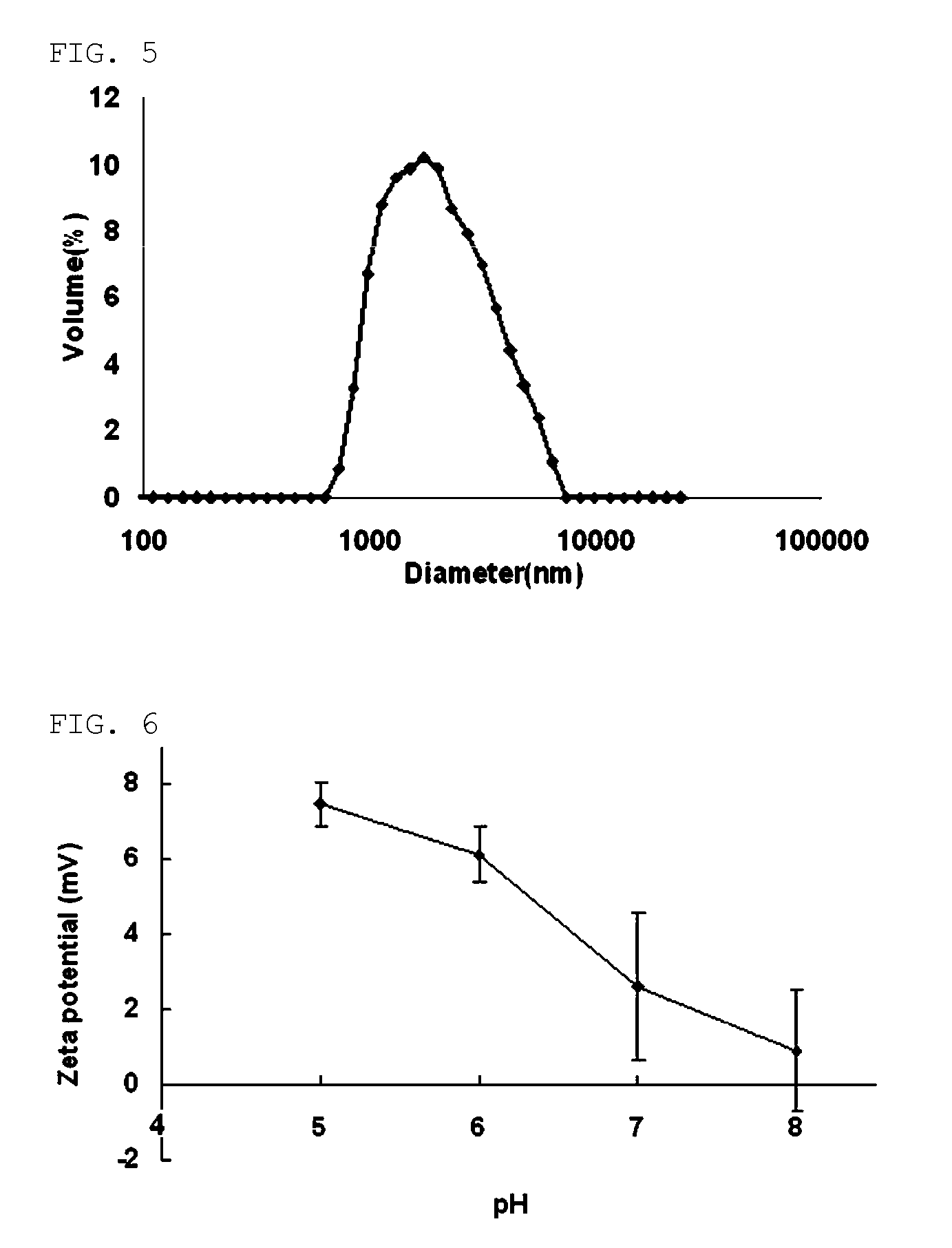Biodegradable PAOX polymer particle with cationic property
a technology of cationic properties and polymer particles, which is applied in the direction of natural mineral layered products, drug compositions, synthetic resin layered products, etc., can solve the problems of large amount of proteins required to obtain therapeutic effects, slow release rate of therapeutic drugs from plga microparticles, and inability to treat acute inflammatory diseases. to achieve the effect of improving the delivery efficiency of drugs, rapid drug release and efficient us
- Summary
- Abstract
- Description
- Claims
- Application Information
AI Technical Summary
Benefits of technology
Problems solved by technology
Method used
Image
Examples
example 1
Materials and Methods
[0058]1. Synthesis of PAOX Polymer
[0059]1,4-Cyclohexanedimethanol (13.34 mmol) and piperazinediethanol (2.35 mmol) were dissolved in 30 mL of dry dichloromethane (DCM), under nitrogen, to which pyridine (37.0 mmol) was added dropwise at 4° C. Oxalyl chloride (15.7 mmol) in 5 mL of dry DCM was added dropwise to the mixture at 4° C. The reaction was kept under nitrogen atmosphere at room temperature for 6 hours, quenched with a brine solution, and extracted from layer separation caused by the addition of additional DCM. The combined organic layers were dried over anhydrous Na2SO4 and concentrated under vacuum. The obtained polymer was isolated by the precipitation in cold hexane (yield >70%). The molecular weight was determined by a gel permeation chromatography (GPC, Futecs, Korea) using polystyrene standards. The chemical structure of polymers was identified with a 400 MHz 1H NMR spectrometer (JNM-EX400, JEOL). (1H NMR in deuterated chloroform on a 400 MHz spect...
example 2
Results
[0084]1. Synthesis and Characterization of PAOX
[0085]PAOX was synthesized from a one step condensation reaction between oxalyl chloride and two diols, cyclohexanedimethanol and piperazinediethanol, as shown in the following scheme 1. The content of piperazinediethanol (15 mol %) in PAOX was chosen after consideration of the degradation kinetics and stability under aqueous conditions. The obtained polymer was pale yellow solid after drying under high vacuum. The following scheme 1 represents the synthesis reaction of cationic PAOX:
[0086]
[0087]The chemical structure of PAOX was confirmed by the 1H NMR (FIG. 1). 1,4-Cyclohexanedimethanol has methylene protons next to hydroxyl groups at 3.5 ppm, and methylene protons next to hydroxyl groups of piperazinediethanol appear at 3.6 ppm. The large peaks at ˜4.2 ppm correspond to the methylene protons adjacent to peroxalate ester linkages, and protons of piperazine appeared at ˜3.0 ppm, suggesting the successful polymerization of PAOX. ...
PUM
| Property | Measurement | Unit |
|---|---|---|
| molar ratio | aaaaa | aaaaa |
| molar ratio | aaaaa | aaaaa |
| size | aaaaa | aaaaa |
Abstract
Description
Claims
Application Information
 Login to View More
Login to View More - R&D
- Intellectual Property
- Life Sciences
- Materials
- Tech Scout
- Unparalleled Data Quality
- Higher Quality Content
- 60% Fewer Hallucinations
Browse by: Latest US Patents, China's latest patents, Technical Efficacy Thesaurus, Application Domain, Technology Topic, Popular Technical Reports.
© 2025 PatSnap. All rights reserved.Legal|Privacy policy|Modern Slavery Act Transparency Statement|Sitemap|About US| Contact US: help@patsnap.com



